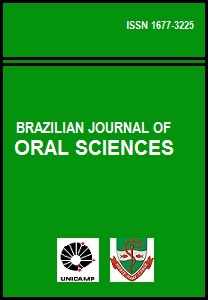Abstract
Clinical practice guidelines are a pre-appraised source of the best available evidence on a particular clinical topic. They are not designed to replace clinical judgment or usurp clinicians’ autonomy. Rather, the clinician is expected to take into account each patient’s history and preferences, together with their clinical judgment, when applying a guideline. This article outlines the organizational structure and the methodology used by a clinical practice guideline development group. We discuss both advantages and disadvantages of guidelines, and outline some of the present barriers to their implementation. The Canadian Collaboration on Clinical Practice Guidelines in Dentistry produce guidelines on issues of oral health. These guidelines are based on systematic reviews of clinical research and validated through consensus of content experts and clinicians.References
Kay E, Locker D. A systematic review of the effectiveness of health promotion aimed at improving oral health. Community Dent Health. 1998; 15: 132-44.
Niederman R, Badovinac R. Tradition-based dental care and evidence-based dental care. J Dent Res. 1999; 78: 1288-91.
Browman G, Levine M, Mohide E, Hayward R, Pritchard KI, Gafni A, Laupacis A. The practice guidelines development cycle: a conceptual tool for practice guidelines development and implementation. J Clin Oncol. 1995; 13: 502-12.
Canadian Dental Association. Canadian Collaboration on Clinical Practice Guidelines in Dentistry. Report on the Initial Meeting. October 1999. Halifax, Canada; 2000.
Woolf S, Battista R, Anderson G, Logan A, Wang E. Assessing the clinical effectiveness of preventive maneuvers: analytic principles and systematic methods in reviewing evidence and developing clinical practice recommendations. A report by the Canadian Task Force on the Periodic Health Examination. J Clin Epidemiol. 1990; 43: 891-905.
Woolf S, Grol R, Hutchinson A, Eccles M, Grimshaw J. Clinical guidelines: potential benefits, limitations, and harms of clinical guidelines. BMJ. 1999; 318: 527-30.
Matthews DC, Sutherland SE. The Canadian Collaboration on Clinical Practice Guidelines in Dentistry (CCCD) Resource Manual, Dalhousie University, Halifax, NS and Sunnybrook and Women’s College Health Sciences Centre, Toronto, ON; 2001.
Caulfield T. What impact do CPGs have on the practice environment and on care? A legal perspective. In: Ushjer S, ed. Scripting a Future for Clinical Practice Guidelines, Health Policy Forum. Toronto, Canada; 1999.
Jutras D. Clinical practice guidelines as legal norms. CMAJ. 1993; 148: 905-8.
Hayward H, Laupacis A. Initiating, conducting and maintaining guidelines development programs. CMAJ. 1993; 148: 507-12.
Hayward R, Guyatt G, Moore K, McKibbon K, Carter A. Canadian physicians’ attitudes about and preferences regarding clinical practice guidelines. CMAJ. 1997; 156: 1715-23.
Stephens R. A lesson to be learned. The Ontario experience with legislated quality assurance should be a warning to other provinces. Oral Health. 1998; 88: 51-2.
Stephens R, Kogon S, Bohay R. Current trends in guideline development: a cause for concern. J Can Dent Assoc. 1996; 62: 151-2.
Tunis S, Hayward R, Wilson M, Rubin H, Bass E, Johnston M, Steiberg EP. Internists’ attitudes about clinical practice guidelines. Ann Intern Med. 1994; 120: 956-63.
The AGREE Collaboration. Appraisal of Guidelines for Research and Evaluation (AGREE) Instrument.URL: http:// www.agreecollaboration.org (access 2003 Jan 15).
National Health Institute for Clinical Excellence. The Development of Clinical Guidelines - Board Report: 1999. URL: http://www.nice.org.uk/nice-web/Embcat.asp?page_oldsite/board/ 151299/app_h.htm (access 2003 Jan 20).
Farquhar D. Recipes or roadmaps? Instead of rejecting clinical practice guidelines as “cookbook” solutions, could physicians use them as roadmaps for the journey of patient care? CMAJ. 1997; 157: 403-4.
Bader J, Shugars D, McFlure F. Comparison of restorative treatment recommendations based on patients and patient simulations. Oper Dent. 1994; 19: 20-5.
Elderton R, Nuttall N. Variation among dentists in planning treatment. Br Dent J. 1983; 154: 201-6.
Forssell H, Kalso E, Koskela P, Vehmanen R, Puukka P, Alanen P. Occlusal treatments in temporomandibular disorders: a qualitative systematic review of randomized controlled trials. Pain. 1999; 83: 549-60.
Kay E, Nuttall N. Clinical decision making—an art or a science? Part III: To treat or not to treat? Br Dent J. 1995; 178: 153-5.
Bader J, Shugars D. Variation in dentists’ clinical decisions. J Public Health Dent. 1995; 55: 181-8.
Kay E, Nuttall N. Clinical decision making—an art or a science? Part II: Making sense of treatment decisions. Br Dent J. 2000; 178: 113-6.
Goldstein B. Unconventional dentistry: Part III. Legal and Regulatory Issues. J Can Dent Assoc. 2000; 66: 503-6.
Stephenson J. National Library of Medicine to help consumers use online health data [news]. JAMA. 2000; 283: 1675-6.
The Brazilian Journal of Oral Sciences uses the Creative Commons license (CC), thus preserving the integrity of the articles in an open access environment.

